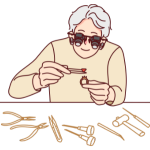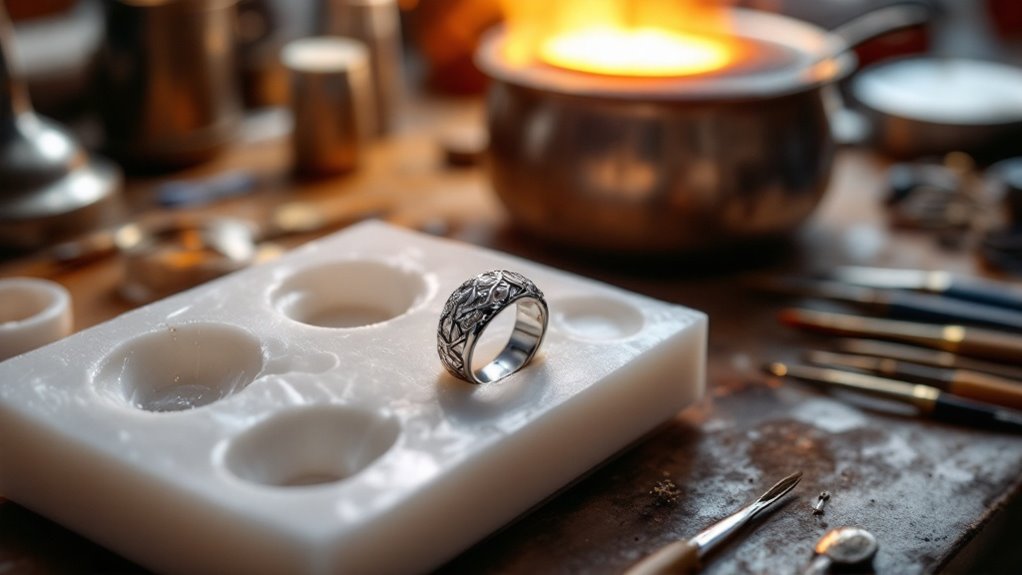Jewelry mold casting benefits from three effective techniques: using high-quality hard modeling wax for detailed wax models, selecting mold materials like silicone or rubber for flexibility and precision, and finishing the cast piece with polishing and inspections to guarantee flawless results. Each step plays an essential role in the intricacy, durability, and aesthetic of the final jewelry. Discover how these techniques contribute to crafting exquisite, quality pieces.
Crafting a Detailed Wax Model
Crafting a detailed wax model begins with the careful selection of high-quality hard modeling wax, which is vital for achieving fine detail and smooth finishes. Precision tools like a Dremel or exacto knife are employed to meticulously carve intricate shapes and textures on the wax. To aid in the casting process, 3-4 sprues are incorporated, connecting at a single point on a sprue base. This guarantees efficient wax removal later. Regularly checking the model against design specifications is essential to avoid scaling issues. Finally, allowing the wax model to cool completely preserves its shape, preventing distortion before mold-making.
Selecting the Right Mold Material
When starting the process of selecting the right mold material for jewelry casting, it is crucial to evaluate the unique properties of each option. Silicone molds offer flexibility and heat resistance, making them ideal for intricate designs. Rubber molds, though less flexible, excel in detail reproduction and withstand wax injection pressure. Metal molds provide durability and are suitable for complex shapes but come at a higher cost. Consider these factors:
- Detail of Design: Choose a material that captures intricate details.
- Durability: Guarantee longevity and resistance to wear.
- Reusability: Opt for reusable materials to save costs.
- Budget Constraints: Balance quality and cost effectively.
Finishing and Enhancing the Cast Jewelry Piece
Once the cast jewelry piece is removed from the mold, meticulous attention is required to enhance its final appearance. An angle grinder with a cut-off wheel is used to trim away sprue lines, ensuring a smooth surface. Any lingering plaster remnants are effectively cleared with an acid bath, resulting in a pristine finish. Buffing the item with a metal buffing wheel eliminates irregularities, enhancing the metal’s shine. To achieve brilliance, specific metal washes are applied for polishing and protection. A thorough inspection for imperfections follows, using polishing compounds or fine sandpaper to refine details and achieve the desired finish.
Conclusion
In the intricate world of jewelry mold casting, mastering the craft begins with creating a precise wax model, which serves as the foundation for the final piece. The choice of mold material is essential, as it influences the durability and detail of the cast. Ultimately, the process culminates in refining and enhancing the cast jewelry, transforming it into a polished work of art. Each step requires skill and attention, ensuring that the finished piece exemplifies exquisite craftsmanship.




Leave a Reply